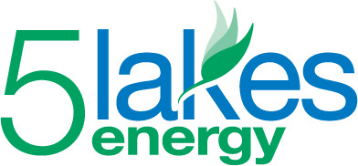General Motors Co. is looking to make the “birthplace of the Chevrolet Volt” one of the most energy-efficient facilities in the world.
At a ceremonial groundbreaking today, GM and DTE Energy announced a six-acre, $3 million solar array will be installed at Detroit-Hamtramck Assembly, which is where the automaker’s Volt is produced.
“We believe we’re making the most environmentally sound car in the world and it should come from the most environmentally sound plant in the world,” said Bob Ferguson, GM’s vice president of public policy. “And that’s what’s going to happen here at De-Ham.”
Ferguson said the 516-kilowatt project, which is expected to take more than six months to build, will generate electricity capable of charging 150 Volts every day for a year – a total of 54,750 of the extended-range vehicles.
The Detroit-Hamtramck installation is part of DTE Energy’s SolarCurrents pilot that calls for enough photovoltaic systems to be installed on customer property or rooftops during the next five years to generate 15 megawatts of electricity throughout Southeast Michigan.
 GM executive Bob Ferguson’s comments about $3 million solar arrayGeneral Motors Co. is looking to make the “birthplace of the Chevrolet Volt” one of the most energy-efficient facilities in the world. GM, along with DTE Energy, today announced that a six-acre $3 million solar array will be installed at Detroit-Hamtramck Assembly, which is where the automaker’s Volt is produced.The video is a segment of what Bob Ferguson, GM’s vice president of public policy, said about the project.Watch video
GM executive Bob Ferguson’s comments about $3 million solar arrayGeneral Motors Co. is looking to make the “birthplace of the Chevrolet Volt” one of the most energy-efficient facilities in the world. GM, along with DTE Energy, today announced that a six-acre $3 million solar array will be installed at Detroit-Hamtramck Assembly, which is where the automaker’s Volt is produced.The video is a segment of what Bob Ferguson, GM’s vice president of public policy, said about the project.Watch videoThe Detroit-based utility company is paying for the project, which is located in the assembly plant’s parking lot.
“This is an exciting day,” said Trevor Lauer, Detroit Edison vice president of marketing & renewables. “We’re pleased and ptroud of our partnership w/ General Motors as we break ground of our newest solar installation here at he facility.”
Lauer said DTE is expected to invest close to $2 billion “over the next several years” in renewable facilities.
Ferguson said the array, along with other energy-efficient upgrades at the facility, will save the Detroit automaker $3 million a year.
“This isn’t just about going green for green sake,” he said. “This is about lowering this plant’s environmental footprint and improving our bottom line. That’s a clear win for everybody, don’t you think?”
Today’s announcement is unrelated to the Detroit automaker’s Monday announcement of plans to invest $2 billion in domestic assembly and component plants around the nation, creating or retaining up to 4,000 jobs at 17 facilities in eight different states.
